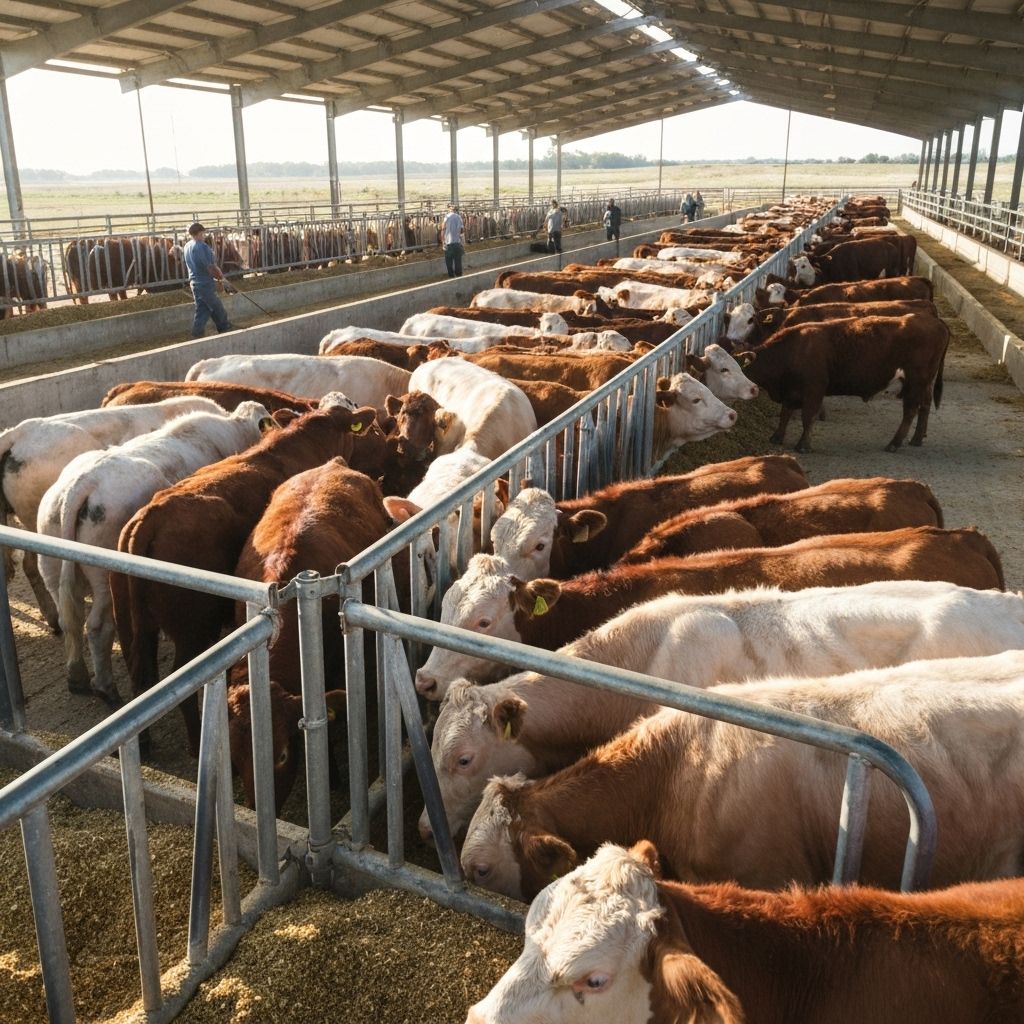Optimize Feed Costs with Regular Weight Data
Feed typically represents 50-70% of your total cattle operation costs. Yet most ranchers make feeding decisions based on guesswork rather than data. Here's how to change that.
The Feed Efficiency Problem
Without regular weight data, you're flying blind:
- Are your cattle gaining as expected?
- Is your current ration optimal?
- Which animals are efficient converters vs. poor performers?
- When is the optimal time to market?
The Power of Frequent Weighing
When you weigh cattle weekly instead of quarterly, you can:
1. Calculate Accurate Feed Conversion Ratios
Know exactly how many pounds of feed it takes to produce a pound of gain. Industry average is 6:1, but efficient operations achieve 5:1 or better. That difference is worth $50-75 per head.
2. Identify Poor Performers Early
Some cattle just don't convert feed efficiently. The sooner you identify them, the sooner you can make decisions:
- Adjust their ration
- Address health issues
- Market them before investing more feed
3. Fine-Tune Rations
Weekly weights let you see the impact of ration changes within 2-3 weeks instead of waiting months. This rapid feedback enables:
- Seasonal adjustments
- Response to forage quality changes
- Optimization for different growth phases
4. Time Your Marketing Perfectly
Know exactly when cattle hit target weights. Avoid:
- Overfeeding past optimal finish
- Marketing underweight animals
- Missing premium pricing windows
Real-World Example
Consider a 100-head feedlot operation:
Without Regular Weighing:
- Quarterly weighing only
- Feed conversion ratio: 6.5:1
- Some cattle overfed, some underfed
- Annual feed cost: $180,000
With Weekly Weighing:
- Optimized rations based on actual performance
- Feed conversion ratio: 5.5:1
- Precise marketing timing
- Annual feed cost: $162,000
Savings: $18,000 per year
Getting Started with Data-Driven Feeding
1. Establish Baseline: Weigh all cattle to know starting points
2. Set Target Gains: Define goals for each group (1.5-3 lbs/day typical)
3. Monitor Weekly: Track actual vs. target performance
4. Adjust Quickly: Make ration changes based on data, not guesses
5. Analyze Trends: Look for patterns across seasons and groups
The Technology Advantage
Traditional scale weighing is too time-consuming for weekly monitoring. Contactless LiDAR weighing makes it practical:
- 15 seconds per animal
- No handling stress that affects next-day weights
- Weigh in pasture or feedlot
- Automatic record keeping
Beyond Feed Efficiency
Regular weight data enables:
- Early illness detection (weight loss is first symptom)
- Genetic selection for efficient converters
- Better cash flow planning
- Improved banker/investor confidence
The Bottom Line
Feed costs aren't going down. But with regular weight monitoring, you can:
- Reduce feed waste by 10-15%
- Improve average daily gains
- Market at optimal weights
- Increase profit per head by $75-125
In a tight-margin business, that's the difference between profit and loss.
Ready to take control of your feed costs?
Ready to Transform Your Cattle Operation?
Join the waitlist for CattleWeight AI and be among the first to experience contactless cattle weighing with your smartphone. Partner with us to shape the future.
